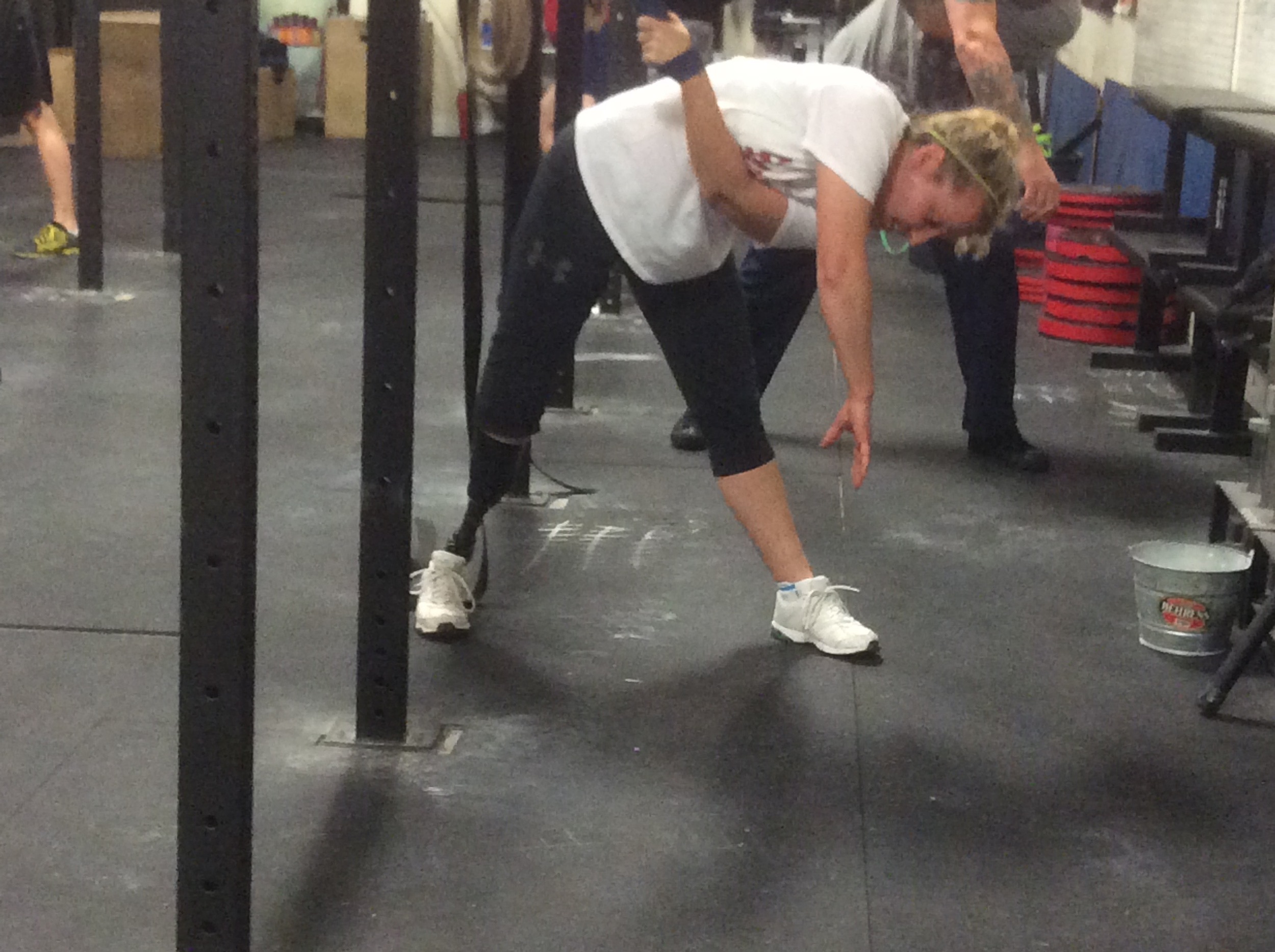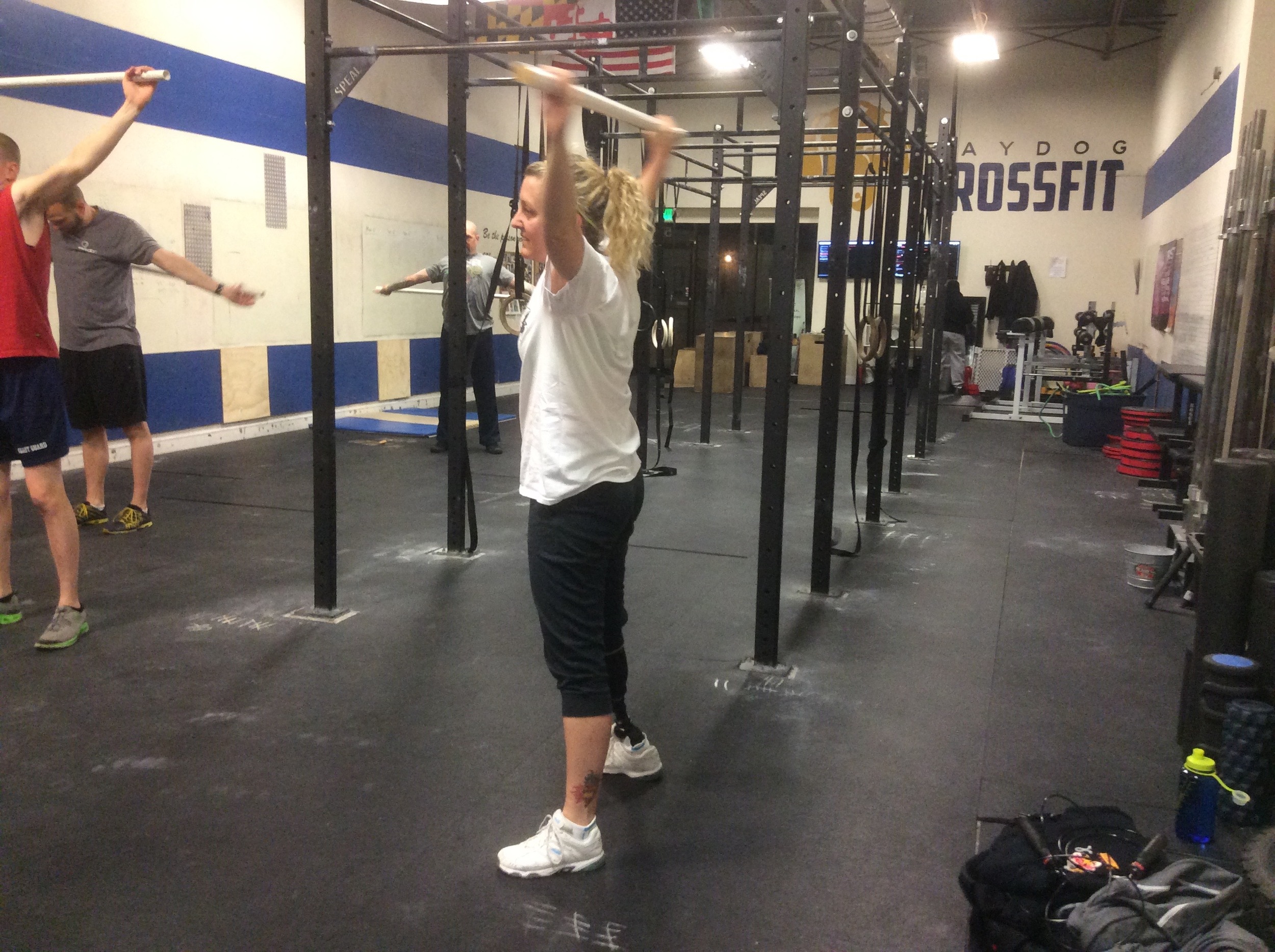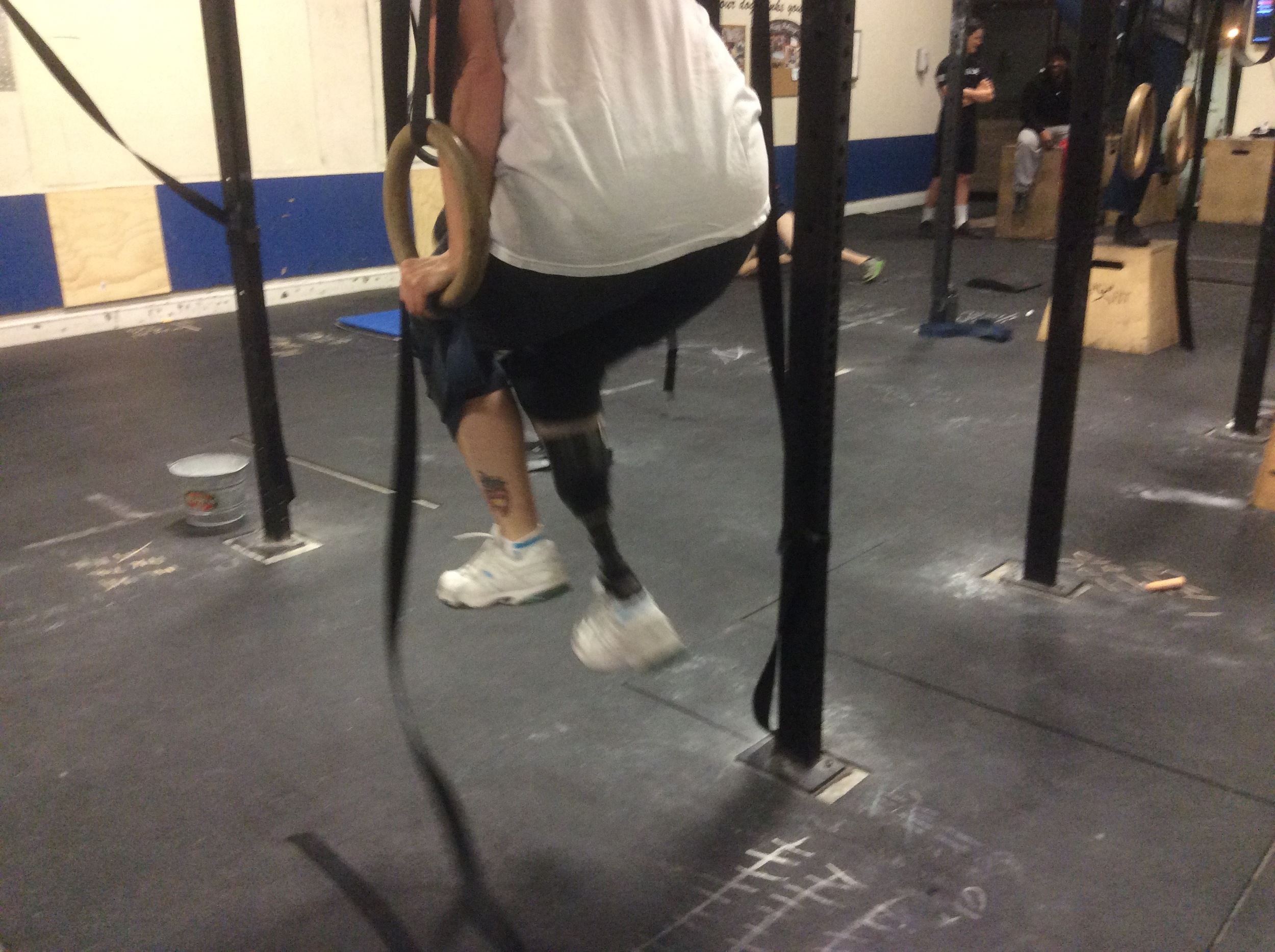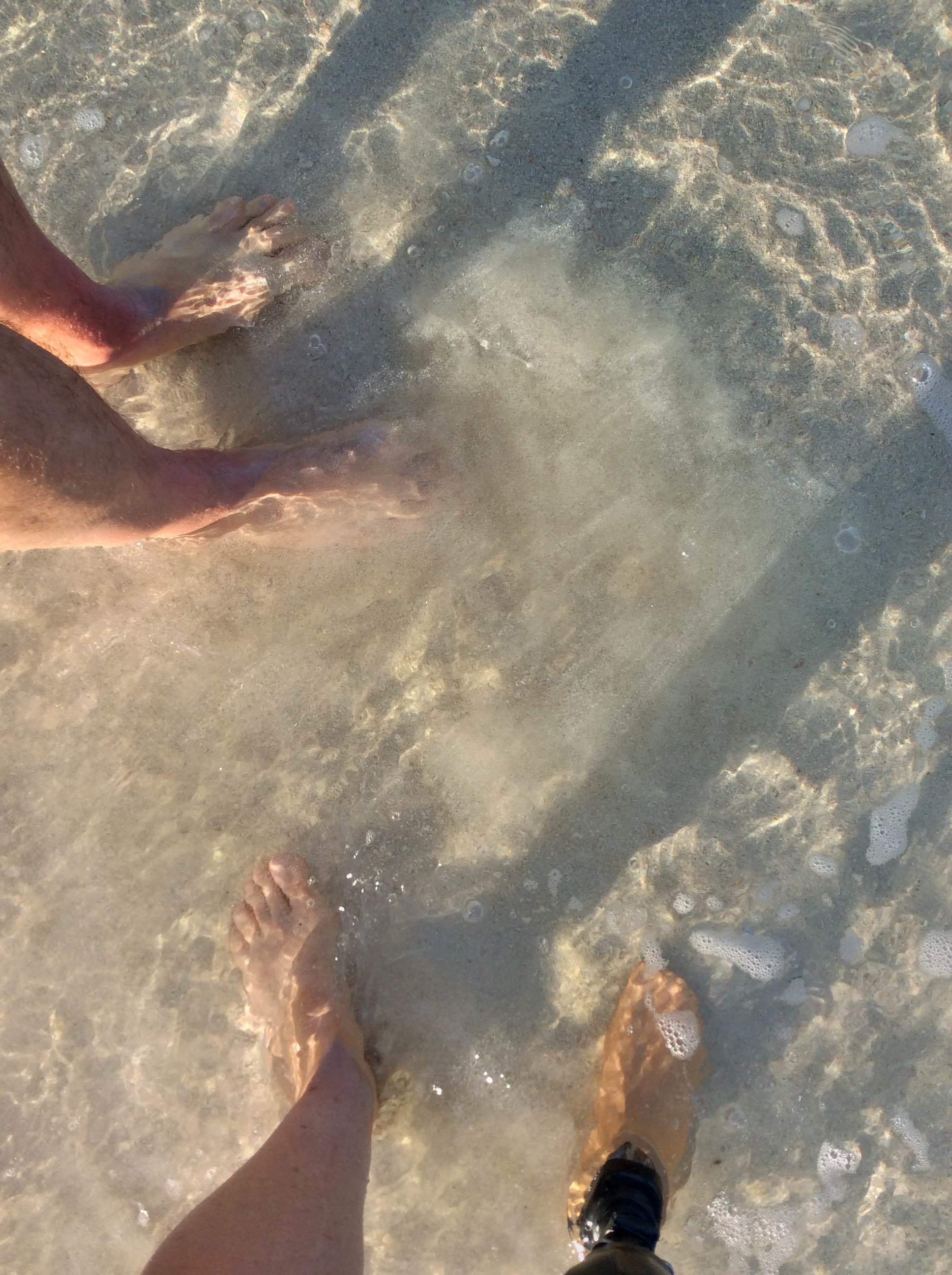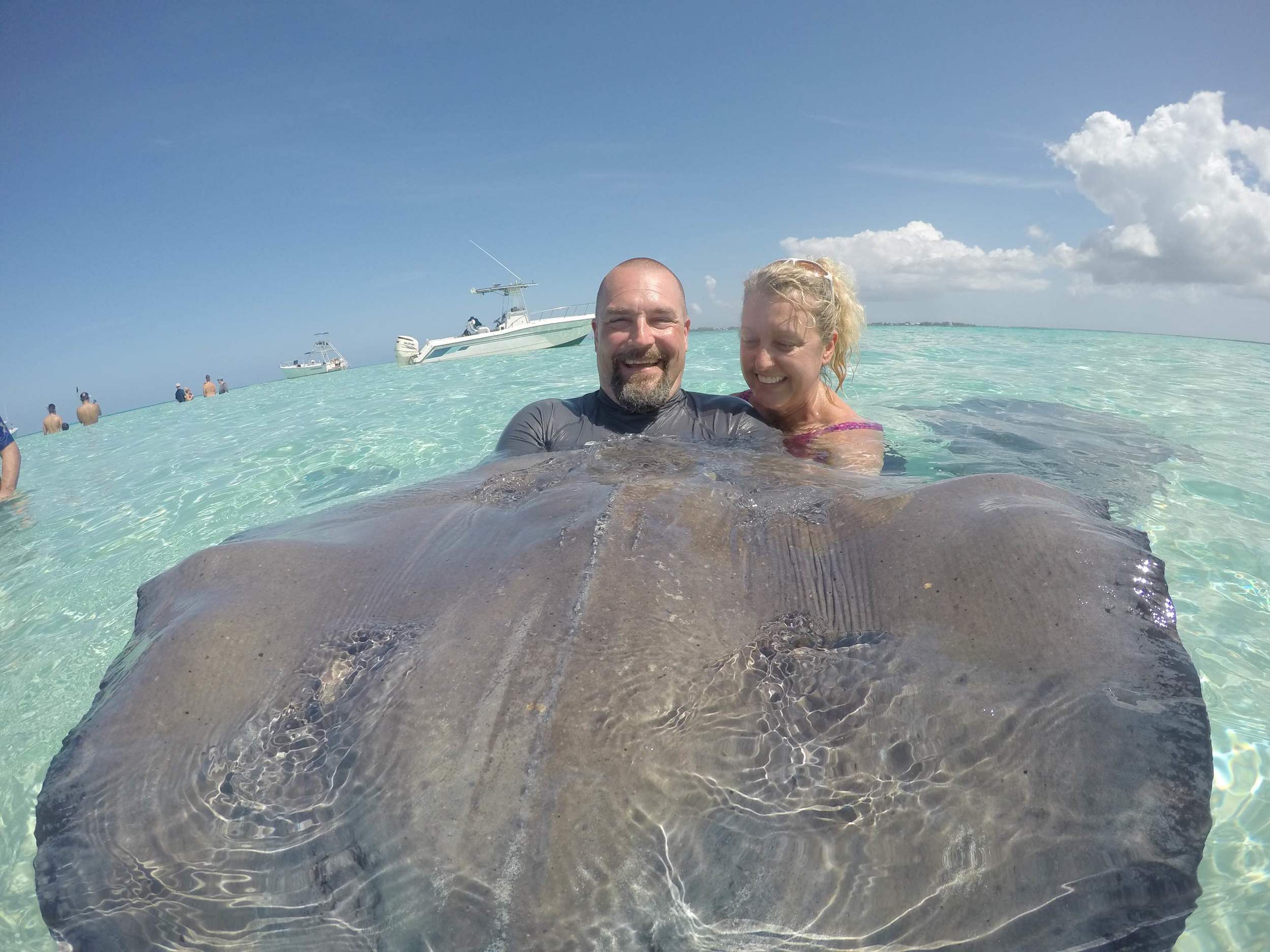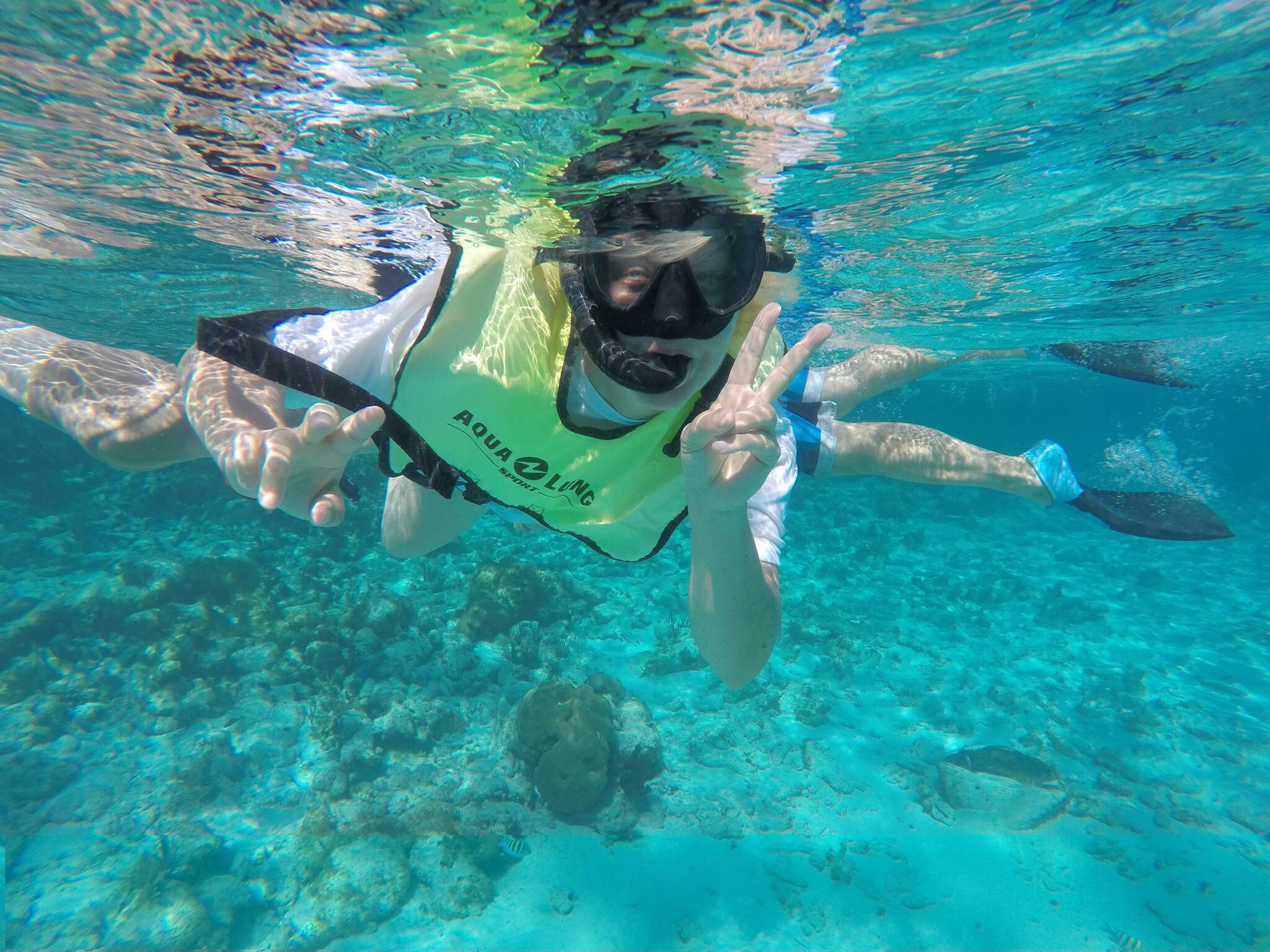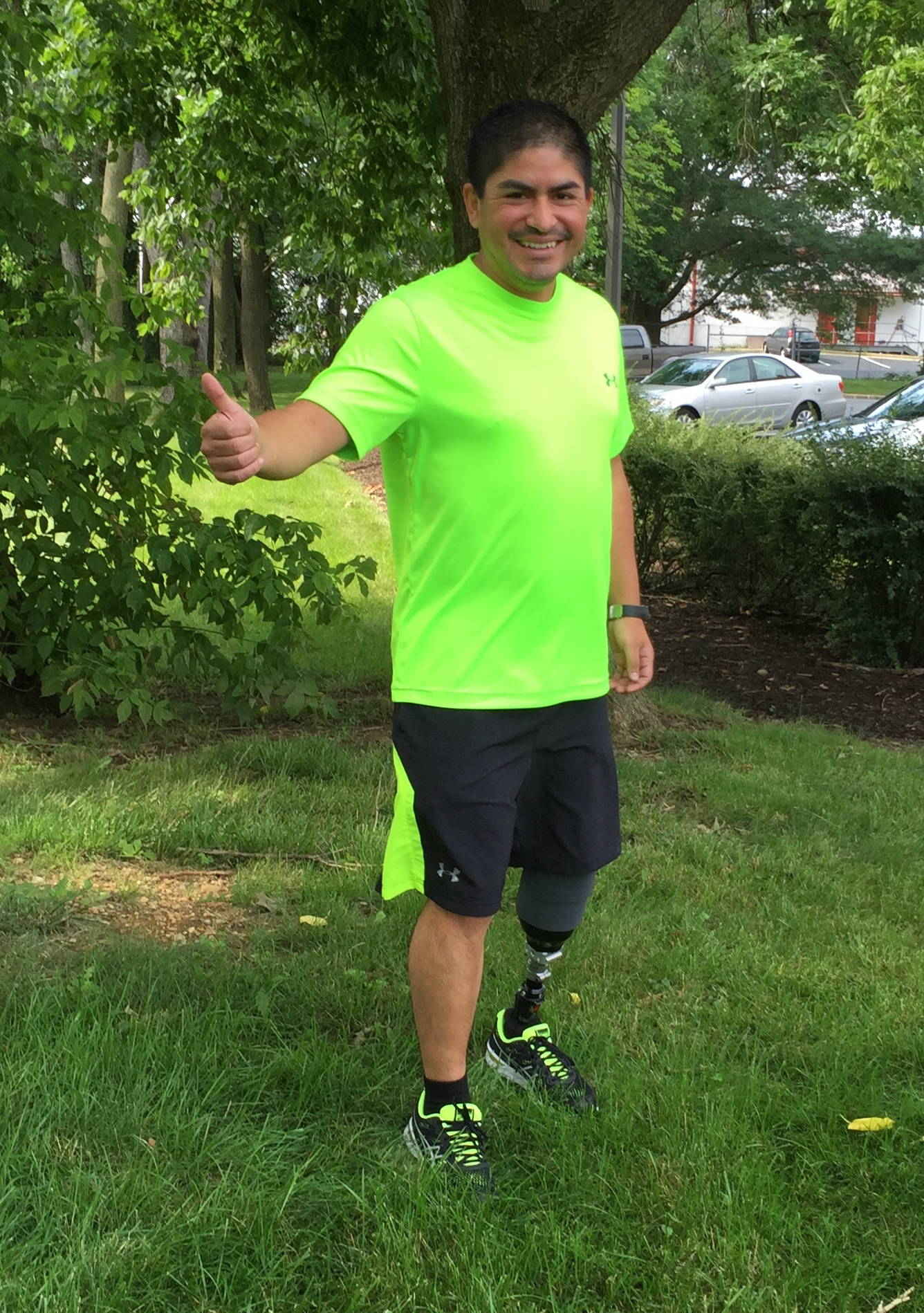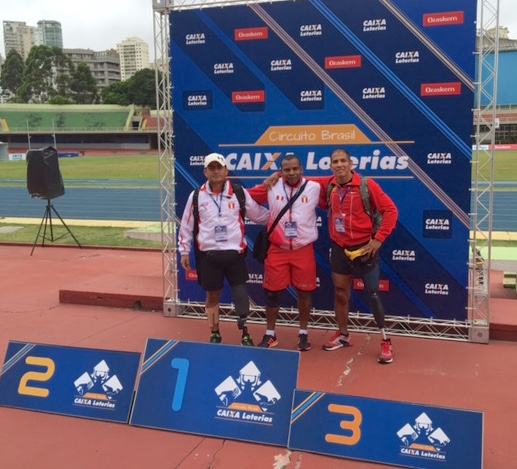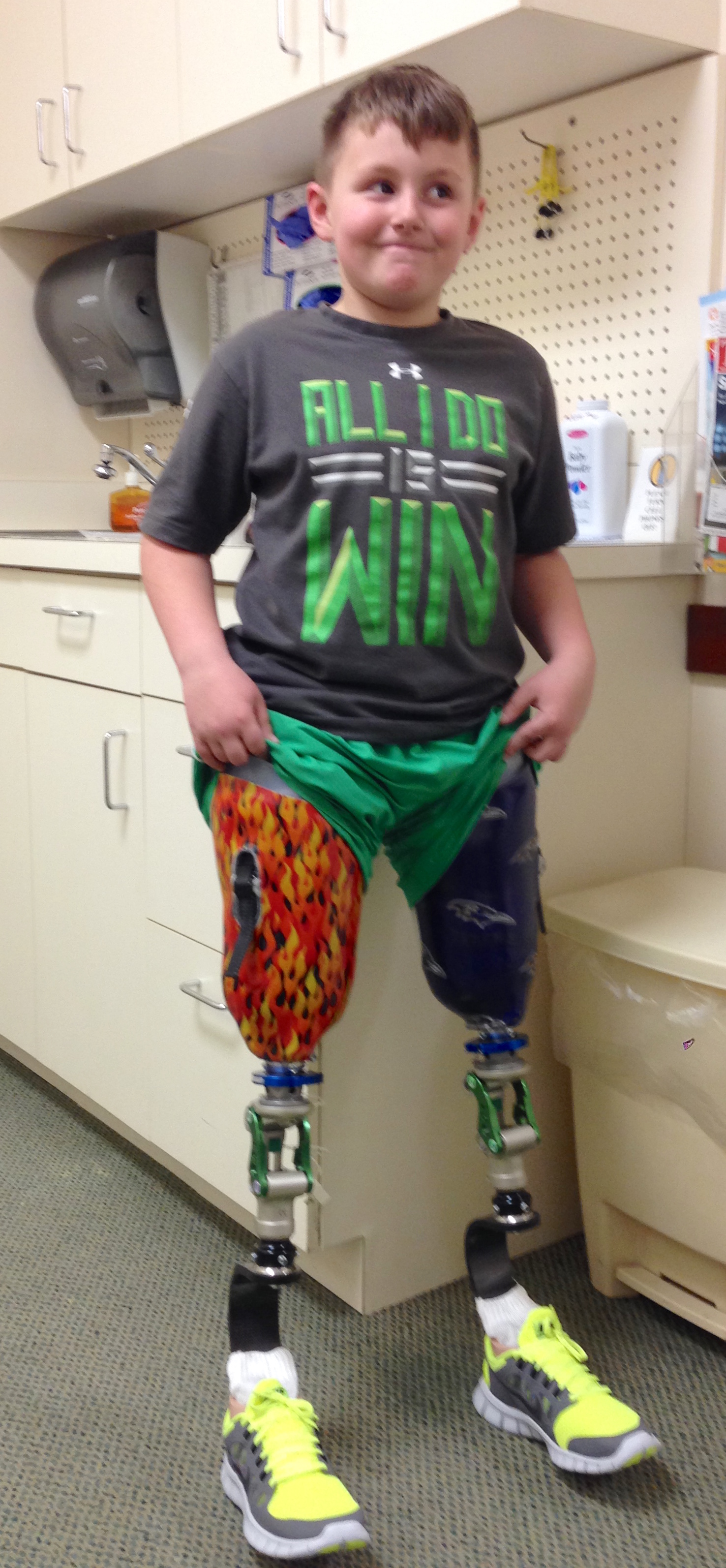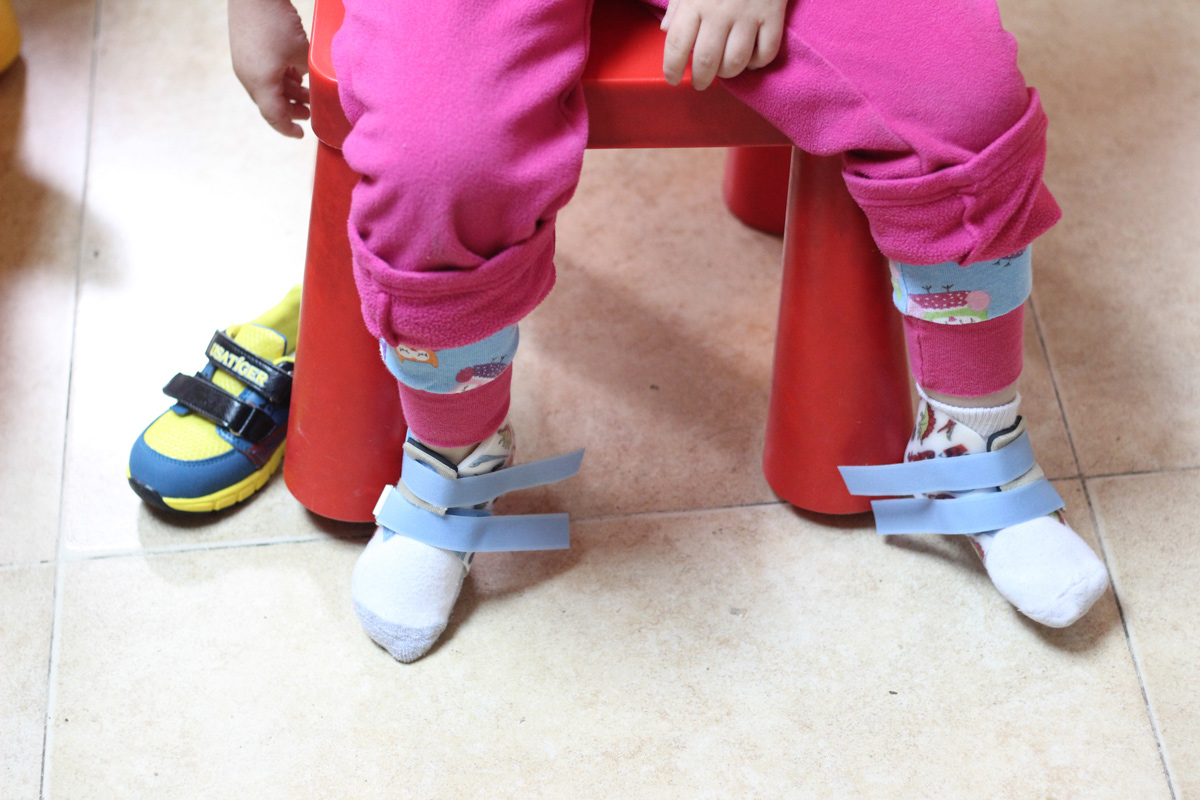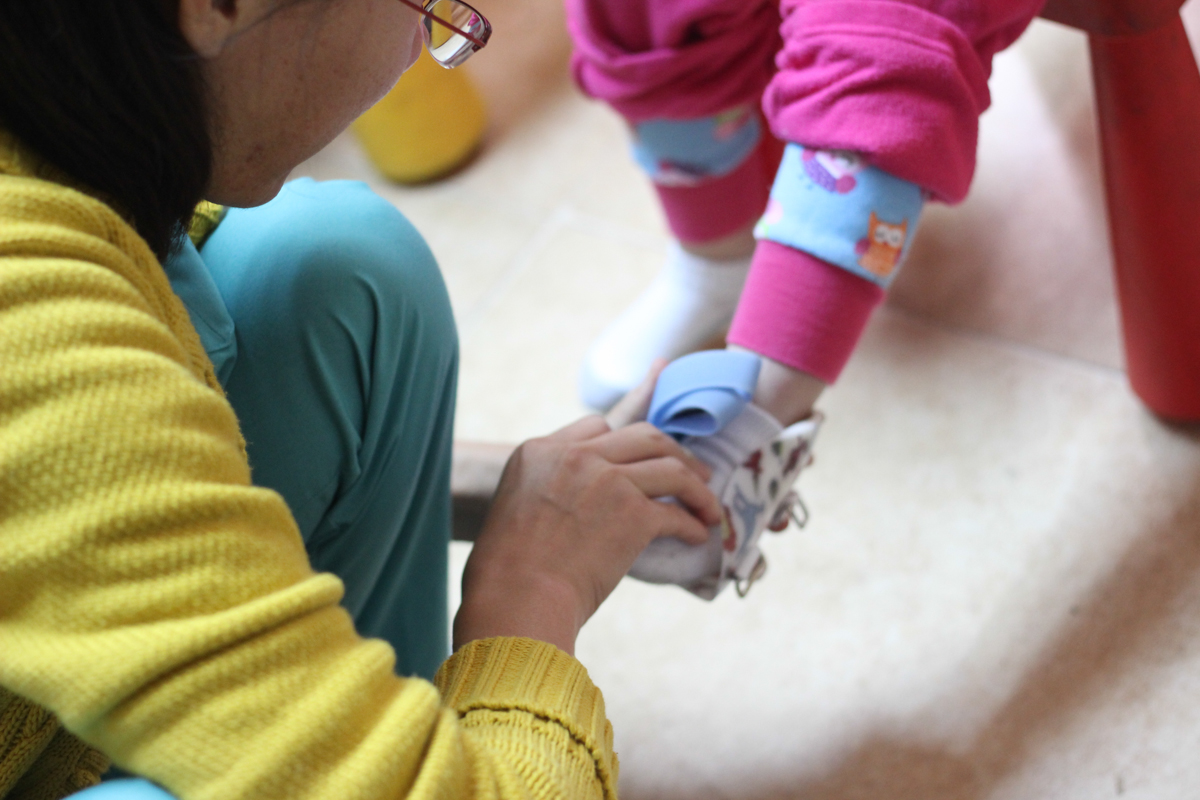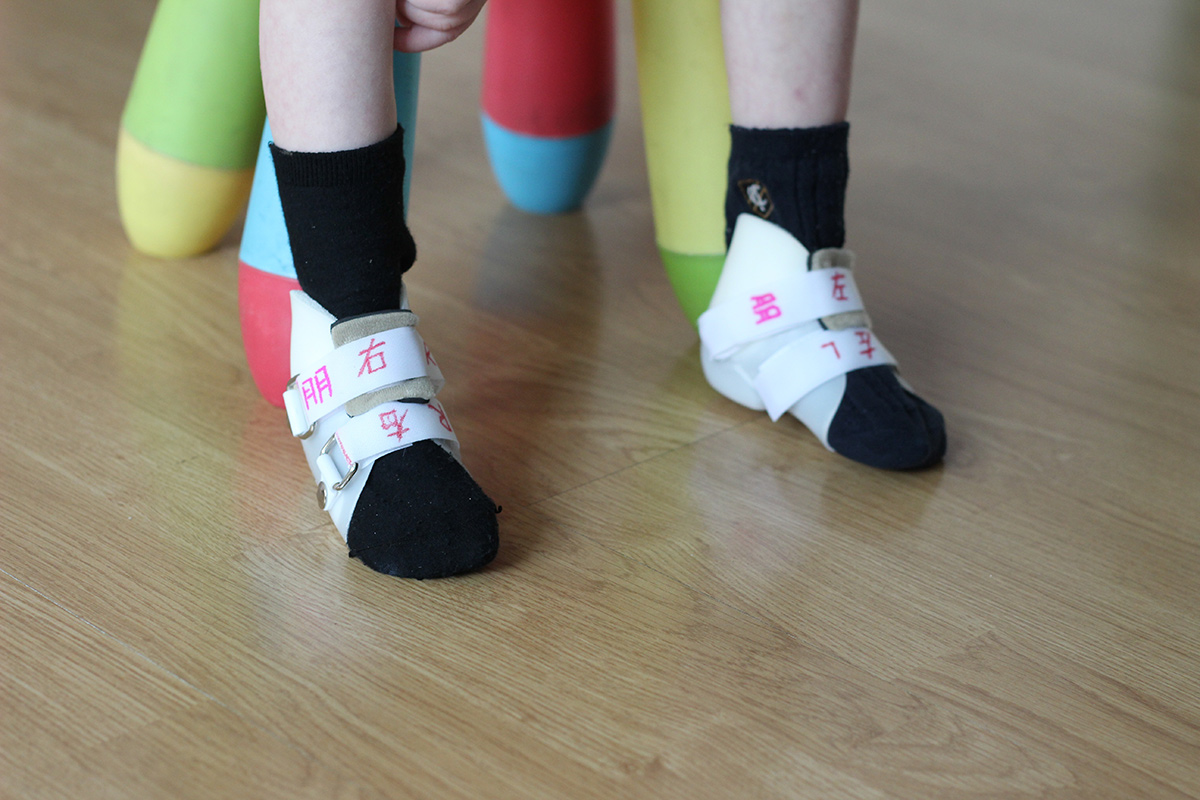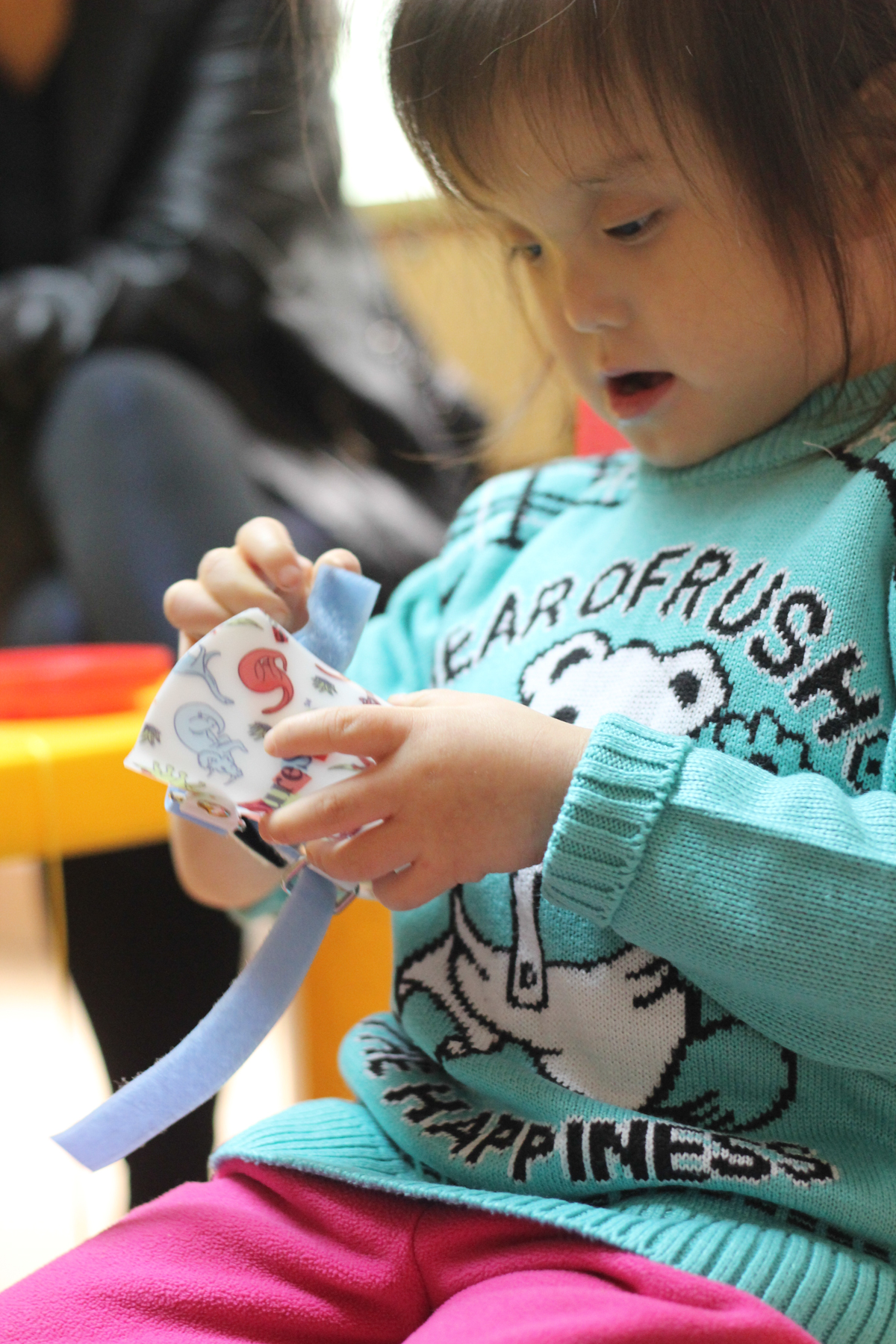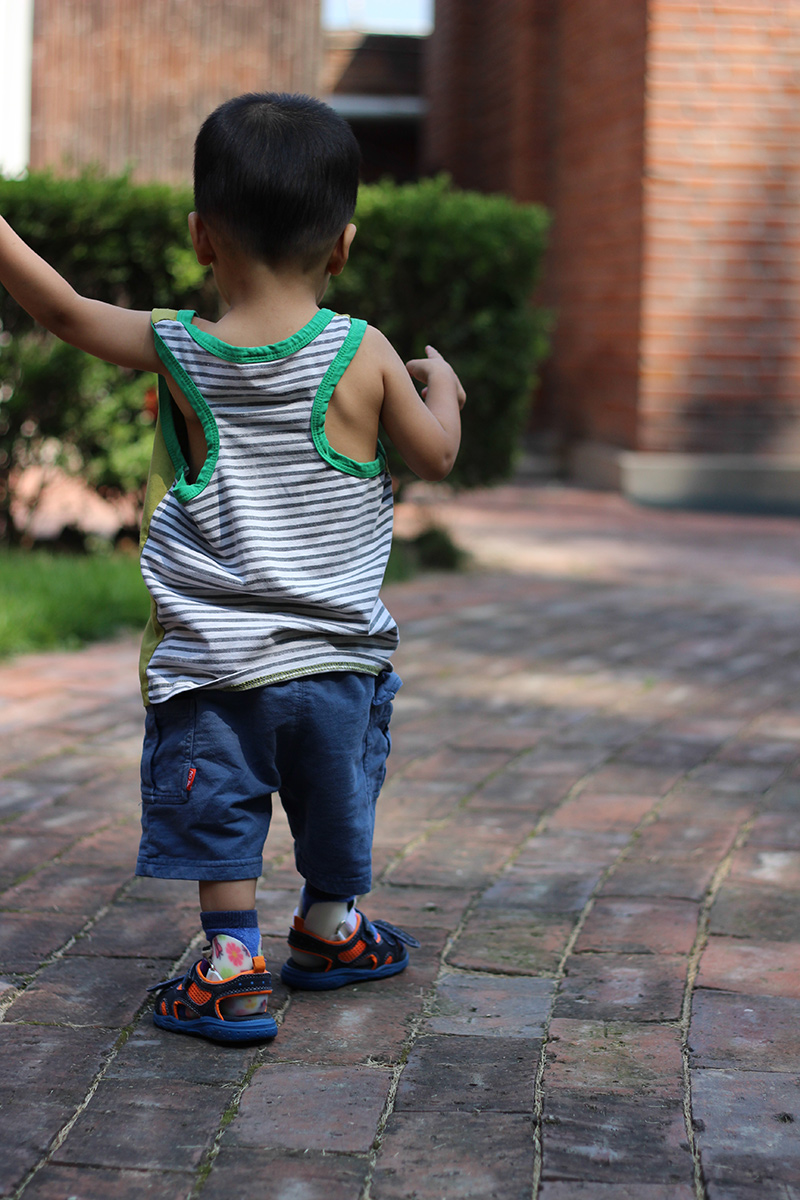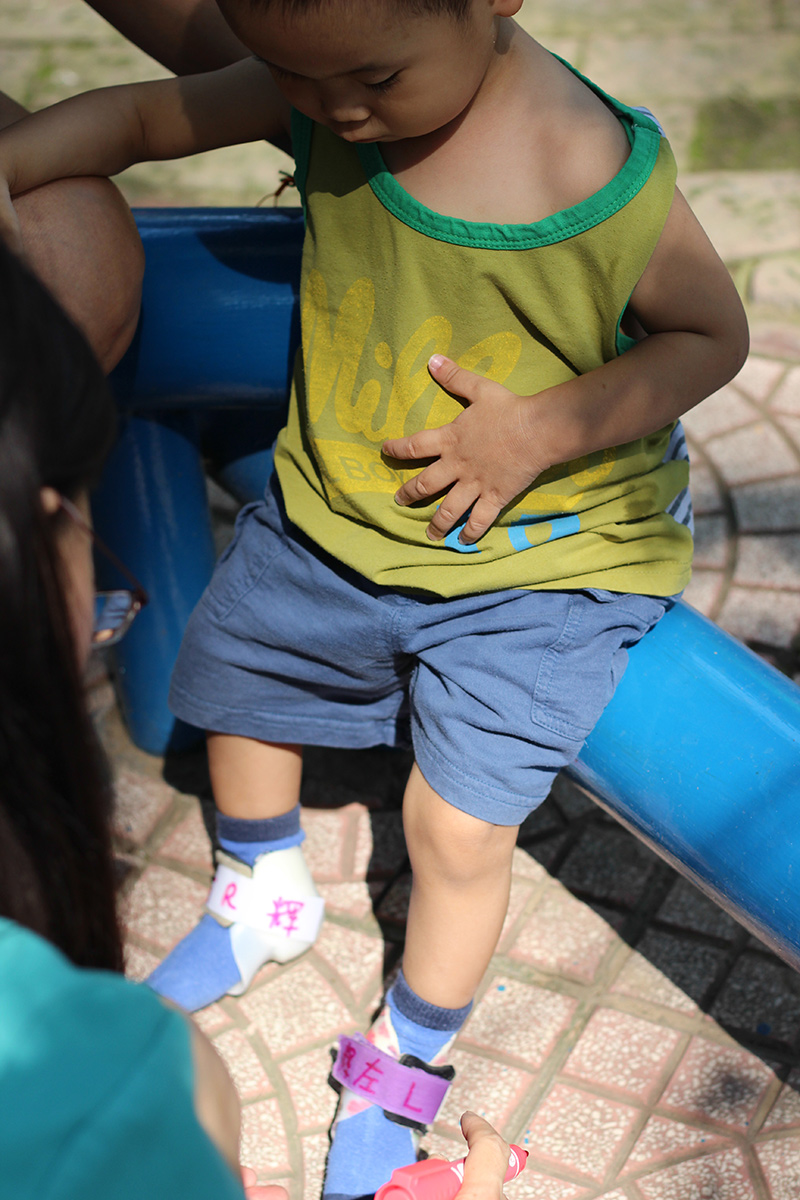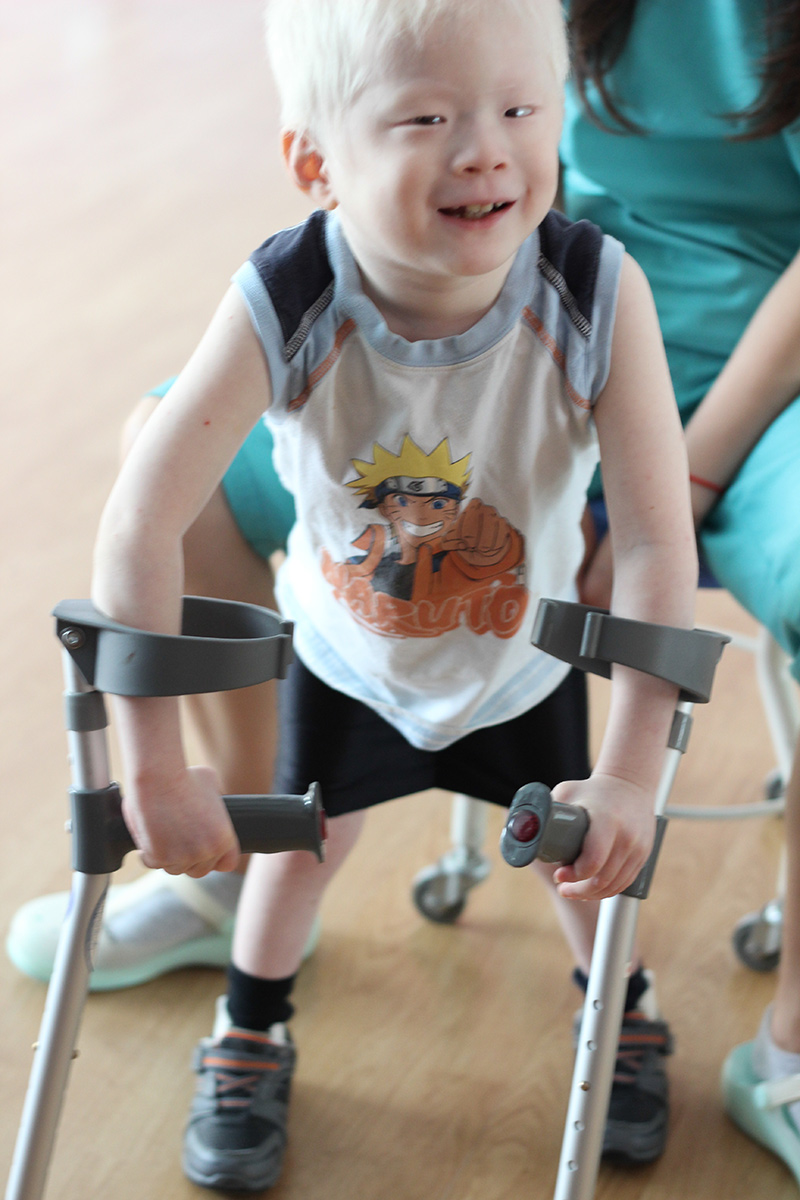When most of us get on an airplane, we don’t think much about it. We maybe put something in the overhead, sit down, shove something under the seat in front of us, and then buckle in. Jenny Windsor has spent a lot of time flying and her routine is somewhat different. She says it can be hard for an amputee to sit for as little as three to four hours on a plane – your limb goes to sleep, you can get pressure sores, so she finally decided not to be embarrassed, and pull the residual limb out of the socket and let it rest, or she takes the leg off and puts it next to her. Now, that could be a conversation starter!
Jenny is a very active forty nine year old, who, as a nineteen year old college student, was in a motor vehicle accident and spent four months in the Baltimore shock trauma facility. After many surgeries, she made a difficult decision to have an amputation. A lot of pain, swelling, and exhaustion were part of her rehabilitation, and she feels like her youth and good health gave her an advantage in her recovery. She also credits her prosthetist and Dankmeyer for her leg and its fit – finding the right prosthetist being critical to recovery and success.
A little over fifteen years ago, in order to remain active Jenny adopted a yellow lab puppy, Lilly. As an 8 week old puppy, Lilly forced Jenny to stay active. When her leg would hurt, or she would develop blisters from too much activity, her dear four-legged companion was there for her.
Jenny, who also liked to hike and ski, eventually started looking for something far more strenuous, maybe an obstacle course-type event. Last year, she participated in a couple of fitness boot camps at RAW Fitness VA, where the class dragged tires around, did burpees, pushups, kettle bell swings - basically two hours of various strenuous activities. This prompted her to want to try a Rugged Maniac obstacle course race scheduled for October. An injury caused by improper over training forced her to reschedule her competition for June of this year. At the same time she needed to see Lilly through her final illness.
This past winter she and her husband Jack (and team member) started back in training at Baydog CrossFit in Severna Park, MD. While she would like to work out every day, due to the physical requirements of CrossFit and a demanding work schedule she is currently limited to three days a week. The goal is to be strong enough to work out six days a week and participate in the CrossFit Open as an “Adaptive Athlete” in 2017. (#TeamSomeAssemblyRequired) The vigorous workouts include jumping rope, push-ups, sit-ups, a variety of weight training exercises (squats, clean and jerk, snatch), rowing and other cardio work.
Jenny has an enormous amount of support from the coaches and classmates at Baydog CrossFit. For a couple of months, no one there knew she was an amputee. She didn’t reveal her prosthetic leg and kept it covered by wearing long sweat pants. She didn’t want “special” attention or to be limited with her workout due to the perception of being “handicapped”. She came to realize that in order to meet her goals as an adaptive athlete, she needed to reveal the prosthesis and place her trust in the coaches to not see her any differently than anyone else in the class. While she does have some limitations because of her amputation, Jenny works together with her coaches to figure out the best course of action if she can’t perform an exercise the traditional way.
CrossFit teaches functional movement patterns – movements you use every day. Jenny sees it as preparation that will help make her become strong enough to compete in and finish the Rugged Maniac 5K race. The Maniac event requires participants to make their way through a number of difficult obstacles – some of which include mud, ropes and heights. She was initially concerned about losing her leg in the mud! After researching the event and planning with her prosthetist Mary Reedy, after the event, when the leg is covered in mud, she will simply hose it off. Then, she will take it in to get the foot cover removed and cleaned out. Problem solved!
Recently, when she and her husband took a break and went on a vacation to the Grand Caymans Jenny took along her “back-up” leg to use for swimming. She could not risk damaging her every day leg by swimming with it, insurance does not cover more than one leg at a time for most amputees. #NotaLuxury. For a long time, she avoided swimming, because she was self-conscious about her leg and scars. This time, when she was out on the boat, she simply sat down and switched out legs – she decided she didn’t care what people might think. So, she swam with the rays, strolled on the beach, and snorkeled for a week, and after that experience has decided she wants to learn to dive.
As if that isn’t enough, part of the fun thing to know about Jenny is that she is a genuine award winning CASI (Chili Appreciation Society International) chili cook when she is not being a corporate controller and an athlete! In January, she and her husband were members of the winning “High Sierra Cooking Team” at the US National Open Championships in Terlingua, TX. In fact, it was while she was competing with her brother at a chili cook-off that she met her husband-to-be over ten years ago. And if chili doesn’t do it for you, she is also a member of the Kansas City BBQ Society and is the head cook for Black Cat BBQ, one of a small, growing number of woman lead BBQ teams. While it has its rewards, being a winning BBQ/chili chef is a lot of hard work. She has been cooking at competitions for more than ten years. Being a pit master means she is on her feet long hours moving heavy bags of charcoal and equipment around.
Jenny credits her mom as being an awesome cook who has given her many of the great family recipes. Would she share any of her award winning chili recipes? Maybe, but she really does want to share some of her experiences as an amputee. Jenny says that you can do whatever you want to do. It doesn’t cross her mind that she cannot do something. She feels it is important to stay fit and healthy. Staying active means using that leg as long as possible – giving in to occasional pain and exhaustion comes with being an amputee but giving up is not an option. And, she wants to share this philosophy and her experiences with others. She recently discovered all of the resources available through the Amputee Coalition, and will be training with them to be a Certified Peer Visitor. Chili, BBQ and mud – a winning combination that is sure to entertain, and inspire others.



